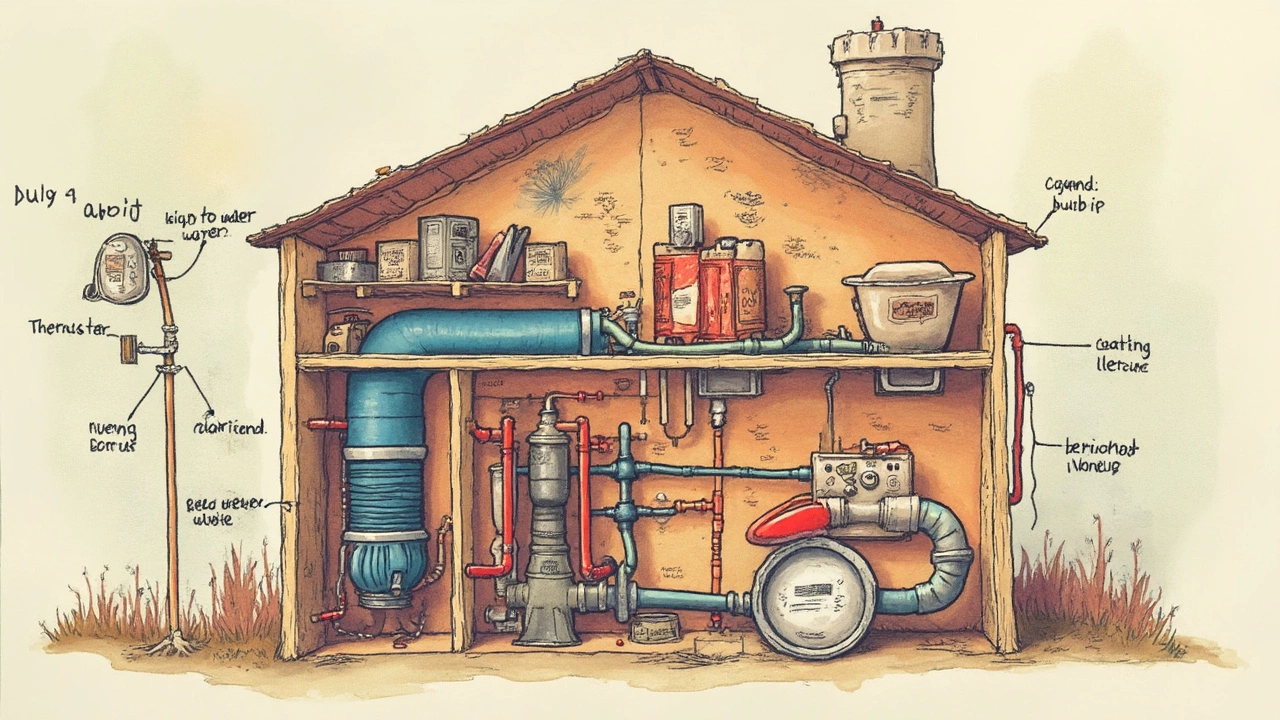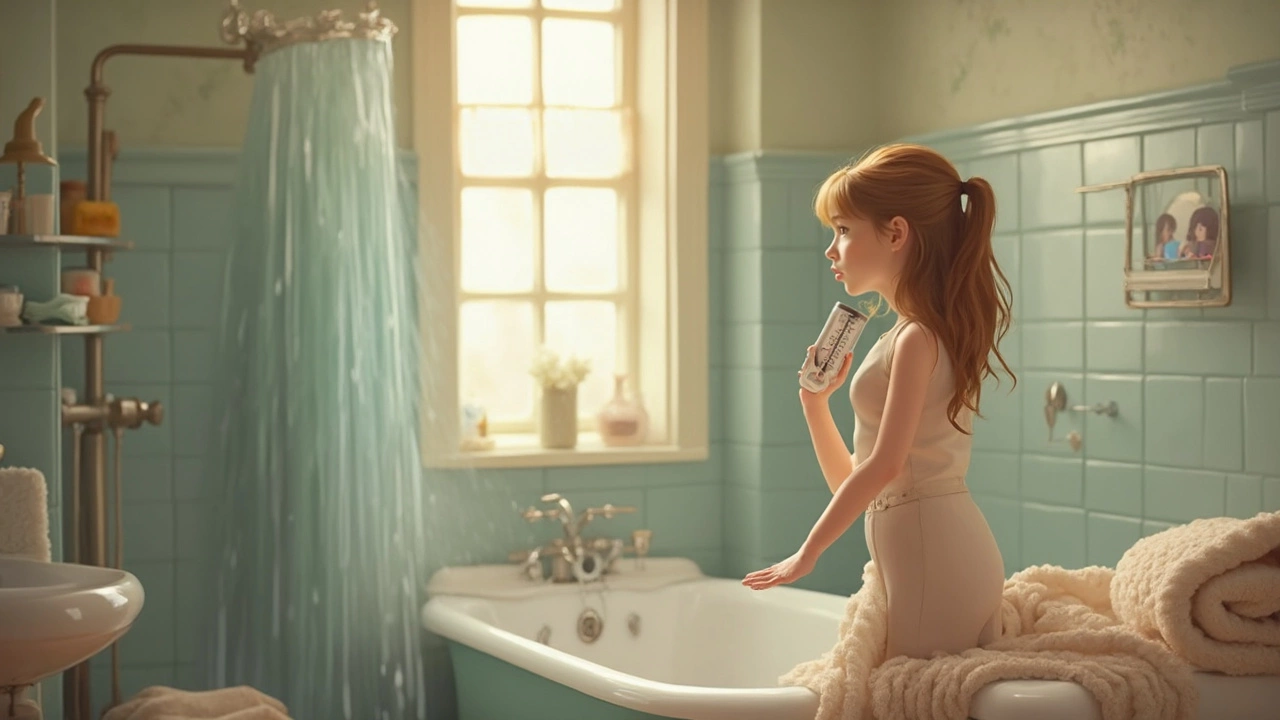Ever hopped into the shower only to get a blast of cold water when expecting a warm embrace? It’s a chilling experience, literally. Gotta say, dealing with a water heater that throws cold surprises is a pain. But fear not, there are reasons it happens, and they’re not as mind-boggling as one might think.
First off, knowing your water heater's basics can save you loads of hassle. It’s like the more you know about your car, the fewer panic calls you make to the mechanic. Maybe your thermostat's just set wrong, or perhaps sediments are playing villain. Even a hiccup in the heater’s elements can leave you shivering when you least expect it.
DIY fixes might sound intimidating, but some are simpler than tying your shoelaces. Before dialing the experts, a few checks like adjusting the thermostat or flushing the tank can do the trick. Rolling up your sleeves could save a few bucks.
Understanding Your Water Heater
If you're wondering why your hot water is turning cold, the first step is getting to know your water heater a little better. Whether it’s a tank or tankless system, understanding how it works can help you troubleshoot faster.
Most traditional water heaters feature a tank that holds and heats water. Inside, a thermostat regulates the temperature. When it dips below the set level, the thermostat signals the heating elements to turn on and warm things up again. Tankless, or on-demand systems, heat the water as it passes through the unit, which means no waiting around—great, right?
For those with tank heaters, sediment build-up at the bottom is a usual suspect for not-so-hot showers. Minerals from the water can settle over time, reducing efficiency. And let’s not forget, if those heating elements aren't working right, you're in for an icy surprise.
Your water heater's thermostat is a crucial player, like the unsung hero keeping everything cozy. A quick way to diagnose issues is checking the thermostat settings. If it’s dialed down, your water might just be cooler than you’d like.
Regular maintenance, like flushing the tank, can ward off many water heater issues. Some pro-tip advice: mark on your calendar to do it annually. This helps prevent sediment build-up, making sure every shower is as warm as you want.
Here's a quick idea of what's usually acceptable inside your water heater:
| Part | Description |
|---|---|
| Tank | Stores water and keeps it heated until needed. |
| Thermostat | Controls the water temperature. |
| Heating Elements | Warms the water inside the tank. |
Understanding these components can go a long way in keeping your hot water flowing nicely.
Common Problems
When your precious hot shower turns into an ice bath, there might be a few usual suspects causing the trouble. Understanding these can save you both time and frustration.
First off, the hot water repair dance often starts with the thermostat. This little device controls the water temperature and can easily get knocked out of whack. If it’s set too low, you’re gonna get chills instead of warmth. So, a quick peek at the settings might be all you need to get back to toasty showers.
Next up: sediment build-up. Hard water deposits love to party in your heater’s tank, especially over time. This sediment crowd can mess with your heater's efficiency. Picture this: with a layer of sediment on the tank's bottom, the water doesn't heat up like it should. That build-up doesn't just keep you cold; it also triggers weird noises.
Another issue could be a faulty heating element. If you've got an electric heater, these elements heat the water directly. When they’re on the fritz, your water won't get hot enough. Think of it like a light bulb that’s blown out; it simply doesn't work anymore.
Lastly, don't overlook leaks. They might not sound related, but lost water pressure can mean less time for water to heat up properly. You’ll find leaks near connections, or worse, from the tank itself.
Here’s a little cheat sheet on these problems:
| Problem | Impact |
|---|---|
| Thermostat issue | Water not hot enough |
| Sediment build-up | Reduced heating efficiency and noise |
| Faulty heating element | No heating |
| Leaks | Low pressure or hot water loss |
Knowing these usual culprits isn’t just about fixing what’s broken; it’s about giving yourself peace of mind and getting back to your favorite cozy showers without a hitch.

DIY Fixes
So you've got a hot water repair situation, and you're keen to tackle it yourself before calling in the pros? Great stuff! Here’s a few steps you can try to fix that annoying cold water rush.
First, let's check the thermostat. It might sound basic, but sometimes settings get accidentally knocked off. Your water heater typically has two thermostats. Make sure they are set between 50-60°C. If they're off, a simple tweak might solve your water heater issues.
If your heated bliss is still playing hide and seek, sediment build-up could be the culprit. Over time, minerals in water settle at the bottom of your tank, reducing efficiency. Flushing the tank can help. Here’s how:
- Turn off the power to the heater. If it's electric, switch it off at the circuit breaker. For gas, turn the thermostat to the 'pilot' setting.
- Connect a hose to the drain valve, located near the bottom of the heater, and direct it to a convenient drainage point.
- Open a hot water tap in your house (like a sink) to let air into the system.
- Open the drain valve and let the tank empty out.
- Once cleared, close the valve, remove the hose, and turn the supply of water back on. Let the tank fill, then restore power.
Still having cold shower problems? Time to check those heating elements. If worn or faulty, they may need replacing. It's like swapping a dud bulb in your lamp. Safety is key here, so if you’re unsure at any point, don’t risk it—better to bring in a professional.
With these DIY steps, you might just reclaim your cozy, warm showers without breaking the bank. If problems persist or the task seems daunting, getting a professional's eye might be wise.
When to Call a Professional
Alright, so you’ve tried the basic fixes but your hot water is still ice-cold or acting all moody. What now? It might be time to bring in a pro. A qualified technician can diagnose issues that a simple check-up might miss.
If you notice persistent problems like water heater leaks, strange noises, discoloration of water, or if your unit is over ten years old, these are red flags. It suggests your water heater isn’t just in need of a tweak—it may be knocking on its last legs.
According to Marcus Bennett, an experienced plumber from Wellington, “Attempting repairs without proper knowledge can not only worsen the issue but also void your warranty.”
"It’s better to have someone who knows their stuff take a look rather than turning a small glitch into a massive disaster," Bennett adds.
Here’s a quick checklist of situations that scream, “Get a pro in here!”:
- Recurring hot water shortages, despite a new thermostat or fixes.
- Rusty or unusual-smelling water.
- The pilot light won't stay lit on a gas water heater.
- Water temperature doesn’t respond to thermostat changes.
A surprising stat: the New Zealand Building Code compels water heaters to be serviced yearly. This doesn't just prevent surprises but lengthens the life of your unit.
When it comes down to it, bringing in a professional isn’t just about fixing the problem—it's about peace of mind. You can save on unnecessary costs and ensure you’ll be enjoying a warm shower without the drama of cold interruptions. And hey, knowing someone’s got your back is worth its weight in hot water, right?

I am an expert in the services industry with a focus on appliance repair. My passion lies in understanding how things work and educating others in simple, engaging ways. This enthusiasm fuels my writing, where I delve into topics around appliance maintenance and troubleshooting. I aim to make these subjects clear and accessible to all readers.